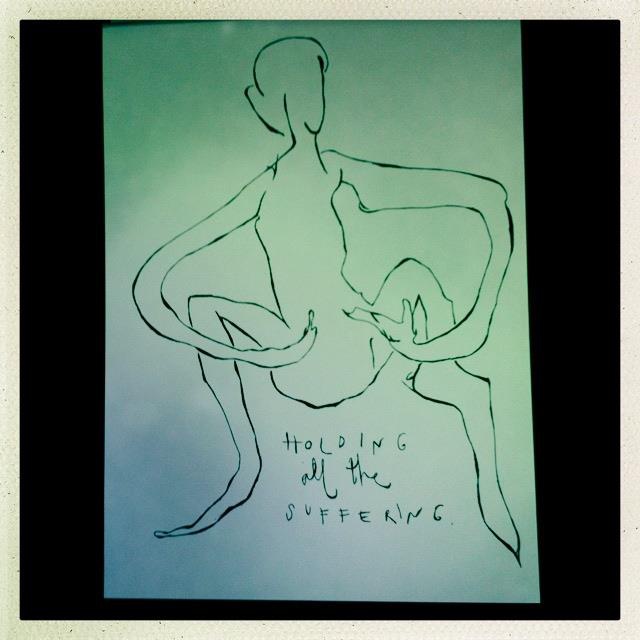I am in awe of the hospice movement.
A few years ago I had the privilege of working in a residential hospice as part of an interdisciplinary team of skilled and dedicated professionals.
Nurses, aides, doctors, social workers, spiritual counselors, integrative therapists, art therapists, music therapists, occupational therapists, bereavement counselors, pet therapists and nutritionists each played a meaningful role in the plan of care of an individual patient.
I got to intimately witness hospice in action, and not a day passed that I wasn’t impressed and moved by what I experienced.
Hospice enables and promotes the possibility of good death. Living authentically also means dying authentically, and having a sense of agency about the last decisions of your life.
Receiving the benefits of all the available resources of hospice care means the option of a peaceful, comfortable and dignified death for a vast majority of hospice patients. As Judith Viorst describes it,
“Dying with dignity is having the sort of care that allows one to die within a kind of embrace.”
The hospice movement emphasizes the importance of preserving and protecting the individual’s right and responsibility to make active choices and participate in the process of care until the very end. No one should be told how to die. Selliken Bernard writes,
“What we probably mean by dignity is dying as ourselves and not as some else, with someone else’s hospital hairdo and agenda for proper or appropriate behavior.”
Receiving support in navigating through the tasks of dying allows patients to stay current and expressive through the end of life journey with presence and sense of authority.
What does this mean in practice?
Caring and consistent medical supervision makes it possible for each patient to make choices about level of pain and changing needs throughout the dying process. Spiritual counseling for patients and families creates space for emerging emotions and issues and helps adjust to the time of transition. Social workers offer help in attending to practical matters and considering final arrangements such as burial wishes, financial and legal details, even obituaries. Tying the logistical loose ends in every area of life allows for the focus to shift on letting go, saying goodbye and transitioning on without worrying about what’s left behind.
Every detail matters in the sensitive environment of final days of life. Adjustable beds, tray tables and lights make a difference, as do soft pillows, cozy blankets and fluffy socks. Personal menu choices can be made according to changes in appetite and ability to chew and digest. Ice chips and lip balm help with dry mouth and chapped lips. Music therapy, aromatherapy, reflexology, reiki and guided imagery can soothe pain and bring the comfort of touch and loving presence to patients and family members.
In my time at the hospice we served patients from 18 to 97 years old. Several patients died each week and the make up of the house was constantly shifting as patients arrived on an ambulance stretcher and left on a mortuary gurney.
Getting to witness and participate in the dying process of another human being is a great privilege. A fully resolved human life hardly exists, but I was amazed by how many patients felt complete and ready to die, quietly slipping away without unnecessary strain.
How we live is ultimately how we die, I have heard said, and my experience confirms this without a doubt.
After death the body immediately feels lighter, emptier, a temple without spirit. I liked sitting in the rooms of patients after they had passed on, holding space for the remaining process of transition. Rituals like the Blessing of the Body (see below) acknowledge the gift of embodiment and help say goodbye to the physical manifestation of the person who has recently died.
We are here, now, until we no longer are. The body is here, now, until it no longer is. We are all essentially
just passing through, walking on a thin thread between birth and death. Our corporeal reality is a fleeting entity, a temporary event lived with an underlying quality of immediacy about its inevitable end. When the time to leave is nearing, hospice can help us attend to the tasks of dying with a light touch and firm support, allowing us to ease into the end of life with minimal struggle and optimal grace.
Blessing of the Body
“We bless your hair
that the wind has played with
We bless your brow
that has been the birthplace of your thoughts
We bless your eyes
that have looked on us with love and viewed the beauty of the earth
We bless your ears
that listened for our voices
We bless your nostrils
the gateway of breath
We bless your lips
that have spoken words of truth
We bless your neck and throat
we will remember your voice
We bless your shoulders
that have embraced us and bourne burdens and strength
We bless your hands
that have shaped wonders
We bless your heart
that has loved us
We bless your lungs
that have sustained your life
We bless your thighs
the strong foundation of your comings and goings
We bless your knees
that have knelt at sacred altars
We bless your legs
that carried you into places of new challenge
We bless your feet that walked your own path through life”
~ Starhawk
~
References:
Bernard, J. S., & Schneider, M. (1996). The true work of dying: A practical and compassionate guide to easing the dying process. New York: Avon Books.
Starhawk, . (1999). The spiral dance: A rebirth of the ancient religion of the great goddess. San Francisco: HarperSanFrancisco.
Viorst, J. (1986). Necessary losses. New York: Simon and Schuster.
Author: Anna Seva
Editor: Emily Bartran
Images: Author’s Own













Read 1 comment and reply